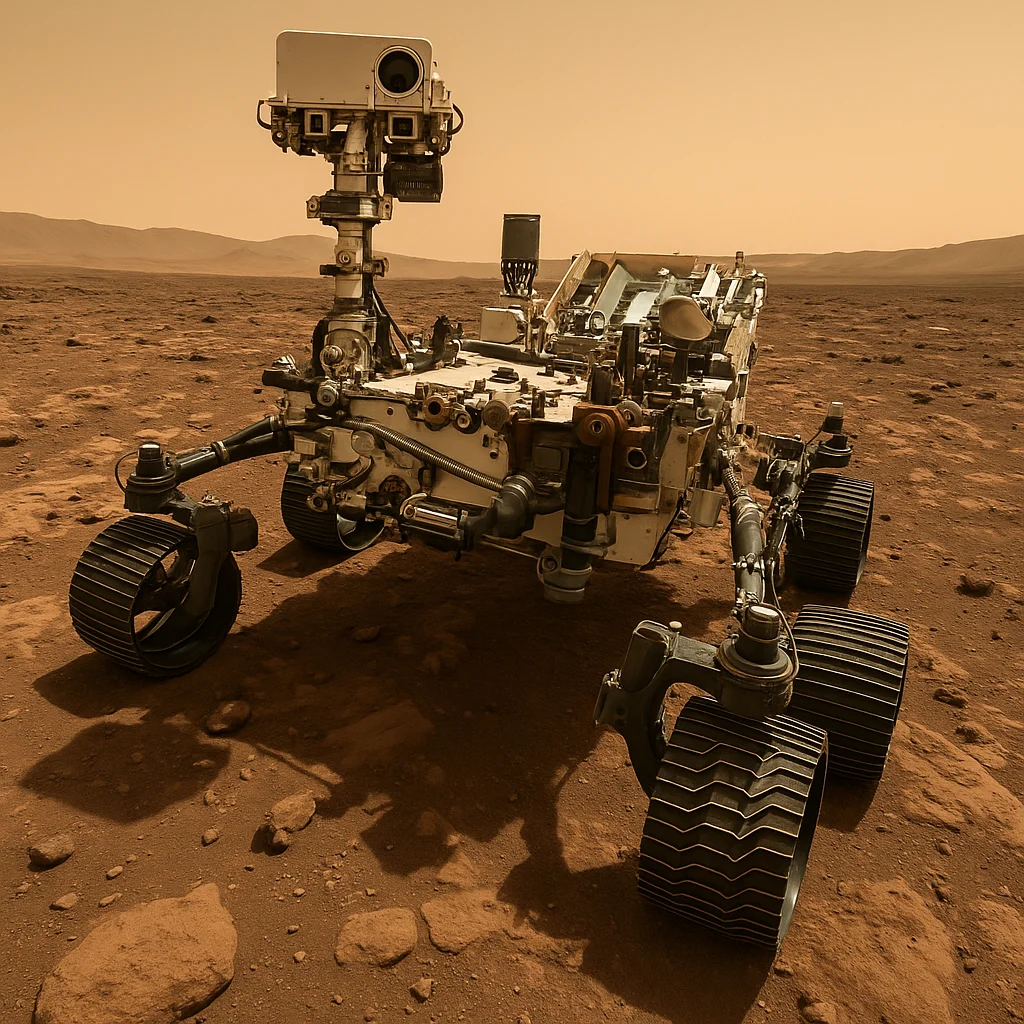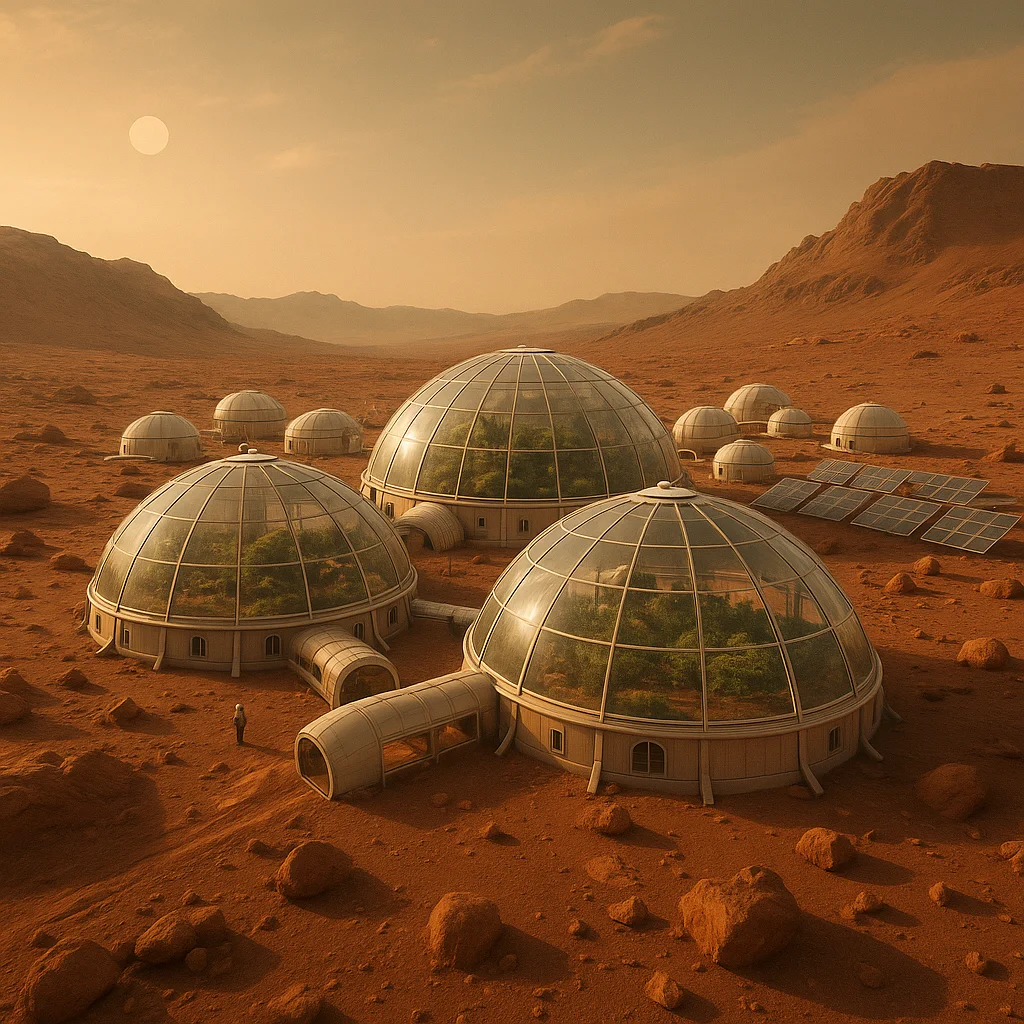Mars has captured human imagination for centuries, but now it stands as more than a distant red dot in the night sky. It represents humanity's boldest ambition: becoming a multiplanetary species. With multiple rovers on its surface and crewed missions on the horizon, the Red Planet is closer than ever.

Why Mars?
Of all the planets in our solar system, Mars presents the most Earth-like conditions and the best opportunity for human settlement:
- Day Length: A Martian day (sol) is remarkably similar to Earth's at 24 hours and 37 minutes
- Seasons: Mars has a tilted axis creating seasons, though each lasts about twice as long as Earth's
- Water Ice: Vast deposits of water ice exist at the poles and underground
- Atmosphere: Though thin, Mars has an atmosphere that provides some protection and raw materials
- Resources: The Martian soil contains materials necessary for construction and life support
Current Exploration
Mars is the most explored planet beyond Earth, with an international fleet of robotic explorers paving the way for human arrival:
Active Rovers
Perseverance (NASA): Landed in 2021, this car-sized rover is collecting samples for future return to Earth and testing oxygen production from the Martian atmosphere through the MOXIE experiment.
Curiosity (NASA): Operating since 2012, Curiosity continues to analyze Martian geology and climate, having confirmed that ancient Mars could have supported microbial life.
Zhurong (CNSA): China's first Mars rover has been exploring Utopia Planitia since 2021, studying the planet's geology and searching for signs of ancient water.
Orbital Assets
A constellation of orbiters provides communication relays and continues scientific observations:
- Mars Reconnaissance Orbiter (NASA)
- MAVEN (NASA)
- Mars Express (ESA)
- Hope (UAE)
- Tianwen-1 (China)
"Mars is there, waiting to be reached. We have the technology to get humans to Mars today; we just need the will." — Buzz Aldrin, Apollo 11 Astronaut
The Path to Human Missions
Multiple space agencies and private companies are developing plans to send humans to Mars within the next two decades:
NASA's Moon to Mars Program
NASA's approach uses the Moon as a proving ground for Mars technologies. The Artemis program will test life support systems, in-situ resource utilization, and deep space habitats that will be essential for Mars missions. The first crewed Mars mission is targeted for the late 2030s.
SpaceX's Direct Approach
Elon Musk's SpaceX is developing Starship specifically for Mars colonization. Their ambitious timeline aims for the first cargo missions in the mid-2020s, with crewed flights following shortly after. The goal is not just to visit Mars but to establish a self-sustaining city of a million people.
International Collaborations
China has announced plans for crewed Mars missions in the 2030s, while the European Space Agency partners with NASA and develops its own technologies. This new space race is more collaborative than competitive, with shared goals of ensuring humanity's future on Mars.

Challenges to Overcome
Reaching Mars is just the beginning. Surviving and thriving there presents unprecedented challenges:
The Journey
- Duration: 6-9 months each way using current technology
- Radiation: No magnetic field or thick atmosphere means high cosmic radiation exposure
- Psychological: Isolation, confinement, and distance from Earth create mental health challenges
- Medical: No possibility of evacuation; crews must handle all medical emergencies
On the Surface
- Atmosphere: 95% carbon dioxide, 100 times thinner than Earth's
- Temperature: Average -80°F (-60°C), ranging from -195°F to 70°F
- Dust Storms: Planet-wide storms can last months, blocking solar power
- Gravity: Long-term health effects of 38% gravity are unknown
Making Mars Habitable
The first Mars settlers will live in pressurized habitats, but the long-term vision involves transforming Mars itself:
Near-Term: Life Support
Initial habitats will recycle everything possible while extracting water from ice and oxygen from CO₂. 3D printing using Martian regolith will create additional structures. Nuclear power will supplement solar panels, especially during dust storms.
Mid-Term: Expansion
As the settlement grows, industrial-scale resource extraction will begin. Greenhouses will provide fresh food and psychological benefits. Underground lava tubes may house larger pressurized spaces protected from radiation.
Long-Term: Terraforming
While full terraforming remains speculative, releasing CO₂ from the polar caps could thicken the atmosphere and warm the planet. This process would take centuries or millennia, but each step makes Mars more Earth-like.
Why It Matters
Mars represents more than a destination—it's humanity's first attempt at becoming a spacefaring civilization. The technologies developed, lessons learned, and perspective gained will fundamentally change our species.
A self-sustaining Mars colony would serve as a backup for human civilization, ensuring our survival beyond any single planet. More importantly, it would mark the beginning of humanity's expansion into the cosmos, with Mars as our first step toward the stars.
The Red Planet awaits. The question is not if we will go, but when—and who will take that first historic step onto Martian soil.